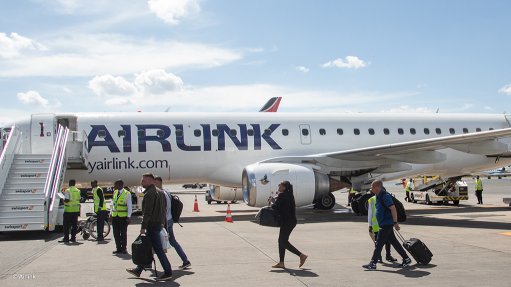
Photo by: Airlink
The global representative body for the airline industry, the International Air Transport Association (IATA), has reported that air passenger traffic continued to grow strongly in May. Total air passenger traffic in May was up 39.1%, year-on-year (y-o-y). Domestic traffic rose 36.4% and international traffic grew 40.9%, y-o-y.
Total demand in May was at 96.1% of the levels recorded in May 2019, before the Covid-19 pandemic hit, while domestic demand was 5.3% above May 2019 levels (and May was the second consecutive month in which domestic air passenger traffic exceeded pre-pandemic levels). The May figure for international demand reached 90.8% of May 2019’s figure.
“We saw more good news in May,” affirmed IATA director-general Willie Walsh. “Planes were full, with the average load factors reaching 81.8%. Domestic markets reported growth on pre-pandemic levels. And, heading into the busy Northern summer travel season, international demand reached 90.8% of pre-pandemic levels.”
In terms of total air travel demand, the region which saw the greatest y-o-y increase in May was the Asia-Pacific, which shot up 130.4%. Africa came second, with a jump of 38.6%, followed by the Middle East (30.1%), North America (28.8%), Europe (19.1%) and Latin America (16.2%).
Concerning international air travel, the Asia-Pacific was again IATA’s best-performing region, with y-o-y demand in May rocketing by 156.7%; capacity in the region increased by 136.1% and the load factor for its airlines was 80%. African carriers were again in second place, with demand jumping 45.2%, capacity by 44.2% but their load factor, at 68.8%, was the lowest for all the regions. Third was North America, with demand up 31%, capacity up 23.2% and a load factor of 85.1%, the highest for all the regions. North American carriers also exceeded their pre-Covid-19 international passenger levels.
Middle East airlines ranked fourth, in terms of y-o-y air passenger demand in May, recording an increase of 30.8%, while their capacity rose by 25% and their load factor was 80.2%. Middle East operators also exceeded their pre-Covid-19 international travel passenger figures. Next came Latin America, with traffic rising by 26.3% and capacity by 27.2%; as capacity rose faster than demand, the result was that their load factor actually decreased slightly (by 0.7 percentage points) to 83.8%. Finally, European carriers saw a 19.8% increase in demand and a 14.2% increase in capacity, leading to a load factor of 84.4%.
The six big domestic air travel markets that IATA reports on are Australia, Brazil, China, India, Japan and the US. China saw by far the most dramatic y-o-y growth in May, of 312%. Japan was second, at 39%, followed by India (13.6%), Brazil (8.6%), the US (7.1%) and Australia (2.1%). Brazil became the latest country to see its domestic market exceed pre-Covid levels, being 6.5% above the level in May 2019. Japan’s domestic demand reached 99.8% of its pre-Covid levels.
“The strong demand for travel is one element supporting a return to profitability by airlines,” highlighted Walsh. “In 2023 we expect airlines globally to post a $9.8-billion net profit. It’s an impressive number, particularly after huge pandemic losses. But a 1.2% average net profit margin is just $2.25 per departing passenger. As a return, that is not sustainable in the long term.”